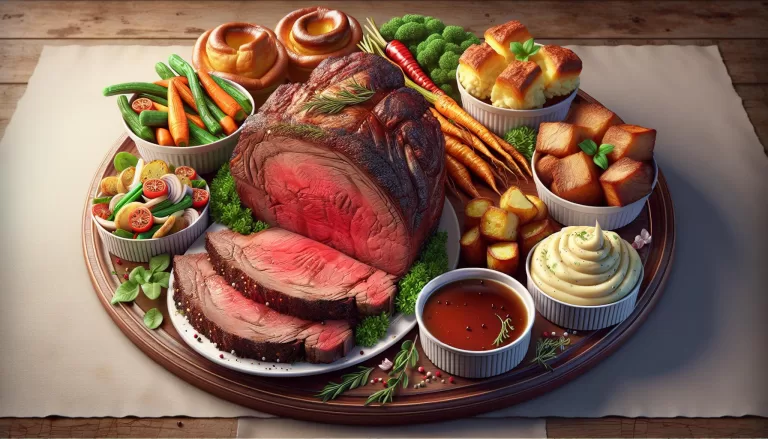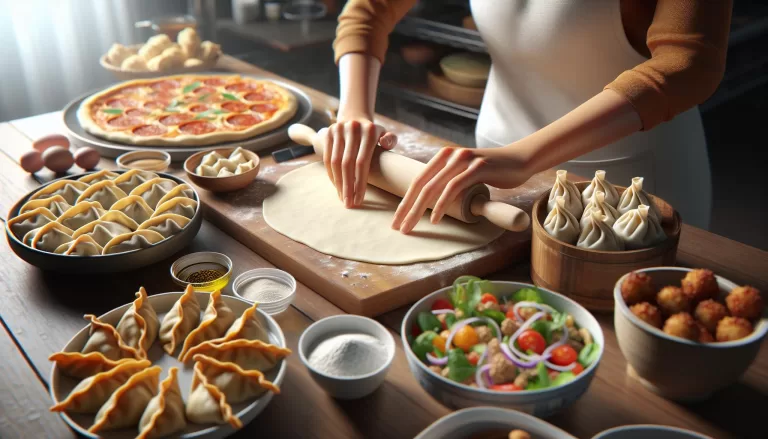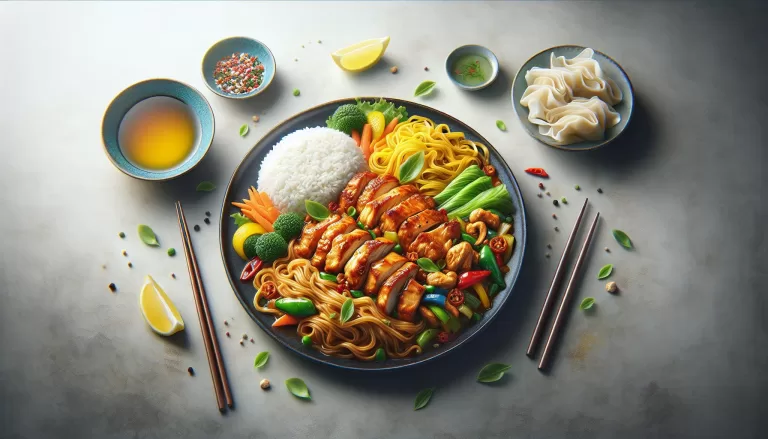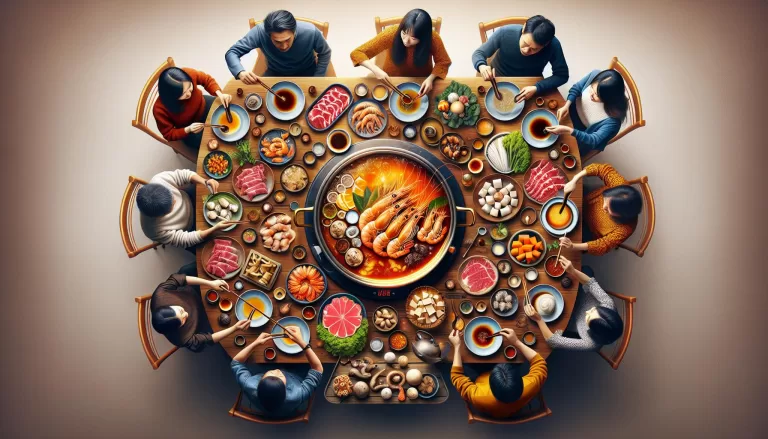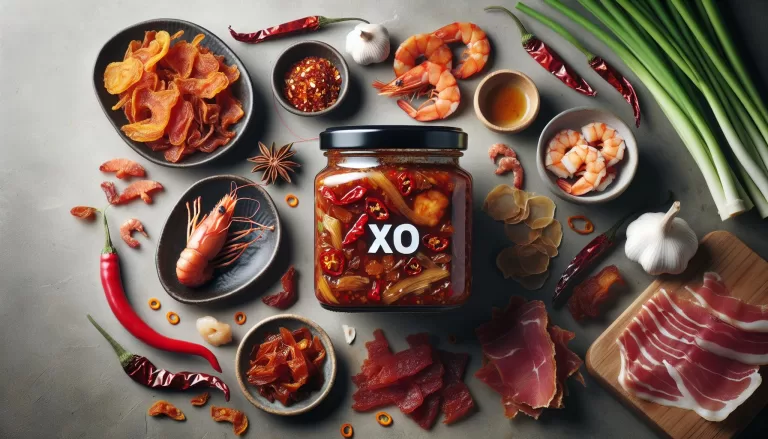From Wok To Table: Easy Hokkien Noodles In Your Kitchen
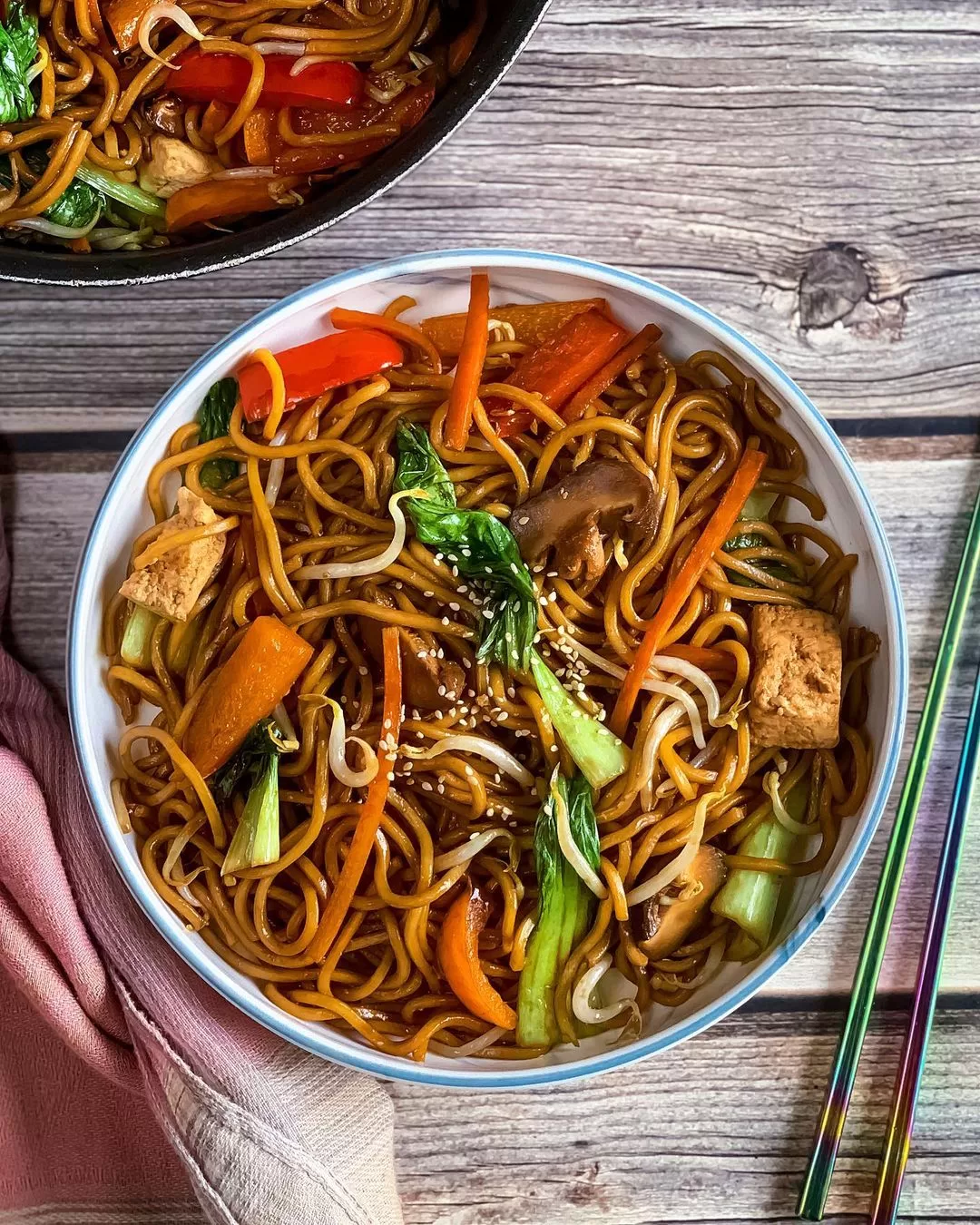
Hokkien noodles are popular in Southeast Asian cuisine, especially in Malaysia and Singapore. The dish consists of thick, chewy egg noodles fried with seafood, meat, and vegetables and then tossed in a flavorful sauce.
Hokkien noodles get their name from China’s Fujian province, where many Malaysian and Singaporean Chinese originated. When cooked, the noodles are made from wheat flour and egg, giving them their signature yellow color and springy, bouncy texture. They have a rich eggy flavor that pairs perfectly with the typical sweet and salty Hokkien noodle sauce ingredients.
Traditionally, the noodles are cooked in pork lard, which adds even more richness. But vegetable oil is more commonly used. In addition to the noodles, Hokkien noodles typically contain shrimp, pork, chicken, Chinese greens, garlic, and sometimes crispy pork belly. This saucy noodle dish is a favorite among locals and tourists in Malaysia and Singapore.
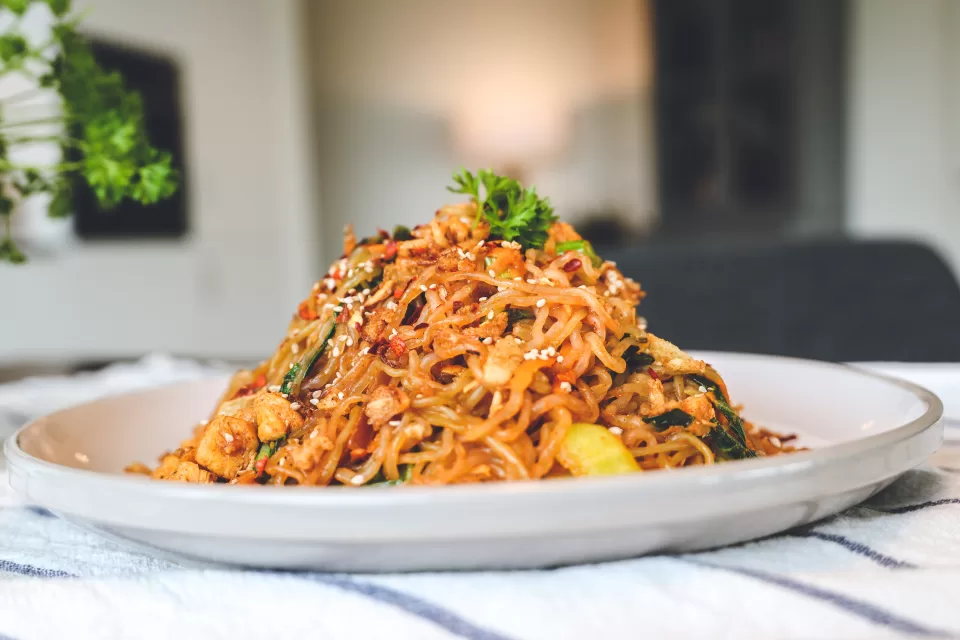
This homemade version captures the trademark flavors of Hokkien noodles. It’s made with fresh or dried thick noodles, chicken, shrimp, broccoli, carrot, and an umami sauce seasoned with oyster sauce, sesame oil, and white pepper. Best of all, it comes together in just 30 minutes right in your kitchen. Follow these simple steps to make restaurant-quality Hokkien noodles at home any night of the week.
Ingredients
- 8 oz fresh or dried thick egg noodles
- 1/2 lb boneless chicken thighs without the skin, cut into 1/4 inch strips
- 8 oz medium shrimp, peeled and deveined
- 3 cloves garlic, minced
- 1 inch ginger, grated
- 2 sliced green onions with the green and white sections separated
- 2 tbsp vegetable oil
- 2 cups broccoli florets
- 1 carrot, julienned
- 1/4 cup chicken broth or water
Sauce
- 3 tbsp oyster sauce
- 1 tbsp soy sauce
- 1 tsp sesame oil
- 1 tsp sugar
- 1/2 tsp ground white pepper
- 1 tsp cornstarch
Step-by-Step Instructions
Prepare the Ingredients
- If using dried noodles, cook according to package instructions until al dente. To end cooking, drain and rinse with cold water. Set aside. For fresh noodles, rinse and drain well.
- Combine chicken with 1 tbsp oil, 1 tsp soy sauce, and 1/4 tsp white pepper in a bowl. Marinate for 10 minutes.
- All the sauce ingredients should be combined in a small bowl. Set aside.
- Mince garlic, grate ginger, and slice green onions, separating whites from greens. Set aside.
Cook the Noodles
- Heat the last tablespoon of oil over high heat in a big skillet or wok.
- Stir-fry the chicken for 2 minutes or until it has browned. Transfer to a plate.
- Stir-fry the shrimp for 1 minute or until pink. Transfer to plate with chicken.
- Include the white pieces of the green onions, garlic, and ginger. Stir fry for 30 seconds until fragrant.
- Add broccoli and carrot. Stir fry for 1 minute.
- Stir sauce mixture and add to skillet. Bring to a simmer.
- Toss the noodles for 2-3 minutes to thoroughly coat them.
- Add chicken broth or water and the chicken and shrimp back to the skillet. Continue tossing for 1 minute until noodles are tender.
- Remove from heat. Garnish with green parts of green onions.
- Serve immediately and enjoy!
Tips for Best Results
- For maximum flavor, use fresh egg noodles if you can find them. Dried noodles work as well; make sure not to overcook them.
- Chicken thigh or breast meat both work well. Thighs will have a bit more flavor. Cut into thin, even strips for quick, even cooking.
- Use medium or large shrimp for the best texture. Cook just until pink to avoid rubbery shrimp.
- A hot wok or skillet is essential for getting that signature sear on the ingredients. Use high heat and don’t overcrowd.
- Resist the urge to stir constantly. Let ingredients sear for a minute before tossing.
- Don’t skip blanching fresh noodles or rinsing cooked dried noodles. This removes excess starch for the perfect tender yet chewy texture.
- Add sauce right before the noodles to allow it to coat them evenly and fully absorb.
- Cook the ingredients in batches to prevent overcrowding in the wok or skillet.
- Garnish with extra green onions and serve immediately for the freshest taste and texture.
Customize It!
The beauty of Hokkien noodles is how versatile they are. Try these tasty variations:
- Substitute beef or pork for the chicken. Marinate thinly sliced meat as directed.
- Use vegetables like bok choy, bean sprouts, bell peppers, or snap peas.
- Add spice with sambal oelek, crushed red pepper, or Sriracha.
- Garnish with chopped peanuts, sesame seeds, lime wedges, or cilantro.
- Swap the shrimp for squid, scallops, or mussels.
- Skip the meat for a veggie lover’s version. Add extra firm tofu or edamame.
- Add a cooked egg on top for additional richness.
Cooking and Serving Tips
- Use a large nonstick skillet or wok to toss all the ingredients together easily.
- Have all ingredients prepped and ready to go before cooking. The stir-frying goes quickly.
- Cook in batches for a less crowded pan if needed.
- A fork or tongs work better than a spatula for tossing noodles without breaking them.
- Add a tablespoon or two of water if the noodles start to stick.
- Portion out servings immediately for the best texture. Noodles tend to stick together as they cool.
- Leftovers can be refrigerated but are best eaten within a couple of days. Reheat gently with a splash of water.
The Perfect Weeknight Meal
Hokkien noodles make an easy, delicious, and healthy weeknight dinner. The vibrant, fresh flavors will appeal to both children and adults. The simple ingredients are likely already in your pantry and fridge.
In just 30 minutes, you can have a restaurant-worthy noodle dish made entirely from scratch. So skip the takeout and enjoy homemade Hokkien noodles for a fraction of the cost. This versatile recipe also makes great leftovers for lunch or a quick dinner later in the week.
More Asian Noodle Recipes to Try:
- Pad Thai – Rice noodles wok-tossed with chicken, shrimp, eggs, peanuts, and tangy tamarind sauce.
- Dan Dan Noodles – Spicy ground pork and bok choy top chewy Chinese egg noodles.
- Beef Chow Fun – Tender beef and onions sauce up wide rice noodles.
- Yaki Udon – Chicken, cabbage, and carrots are stir-fried with thick udon noodles.
- Lo Mein – Wheat noodles tossed with chicken, veggies, and savory Chinese brown sauce.
- Pad See Ew – Smoky Chinese broccoli and eggs flavor broad rice noodles.
So get your wok or skillet ready and enjoy this easy homemade version of a takeout classic. These saucy, slurp-worthy Hokkien noodles will be your new go-to weeknight dinner.
Frequently Asked Questions
What type of noodles are used in Hokkien noodles?
Hokkien noodles are thick, yellow eggs made from wheat flour and egg. Look for fresh or dried noodles labeled as Hokkien-style or Chow Mein. Avoid using thin noodles like pad Thai noodles.
Can I use a skillet instead of a wok?
Yes, a large nonstick skillet works well. You won’t get the intense smoky flavor from wok hay, but the noodles will still taste delicious. Use high heat and cook in batches.
How do I prep dried Hokkien noodles?
Boil dried Hokkien noodles per package directions until al dente. Rinse thoroughly with cold water to remove starch and prevent overcooking. Fresh noodles only need a quick rinse.
Is lap cheong essential, or can I omit it?
The lap Cheong (Chinese sausage) adds a smoky pork flavor but can be omitted. Substitute ham or bacon. For a vegetarian version, use smoked tofu.
Can I substitute bok choy or Napa cabbage for the Chinese broccoli?
Absolutely! Either green works well. Just adjust cooking times slightly for softer or firmer vegetables. This versatile noodle dish is very customizable.
How should I store leftovers?
Allow noodles to cool completely, then store them in an airtight container. Refrigerate for up to 3 days. With a splash of water to replenish moisture and avoid sticking, gently reheat in the microwave.





